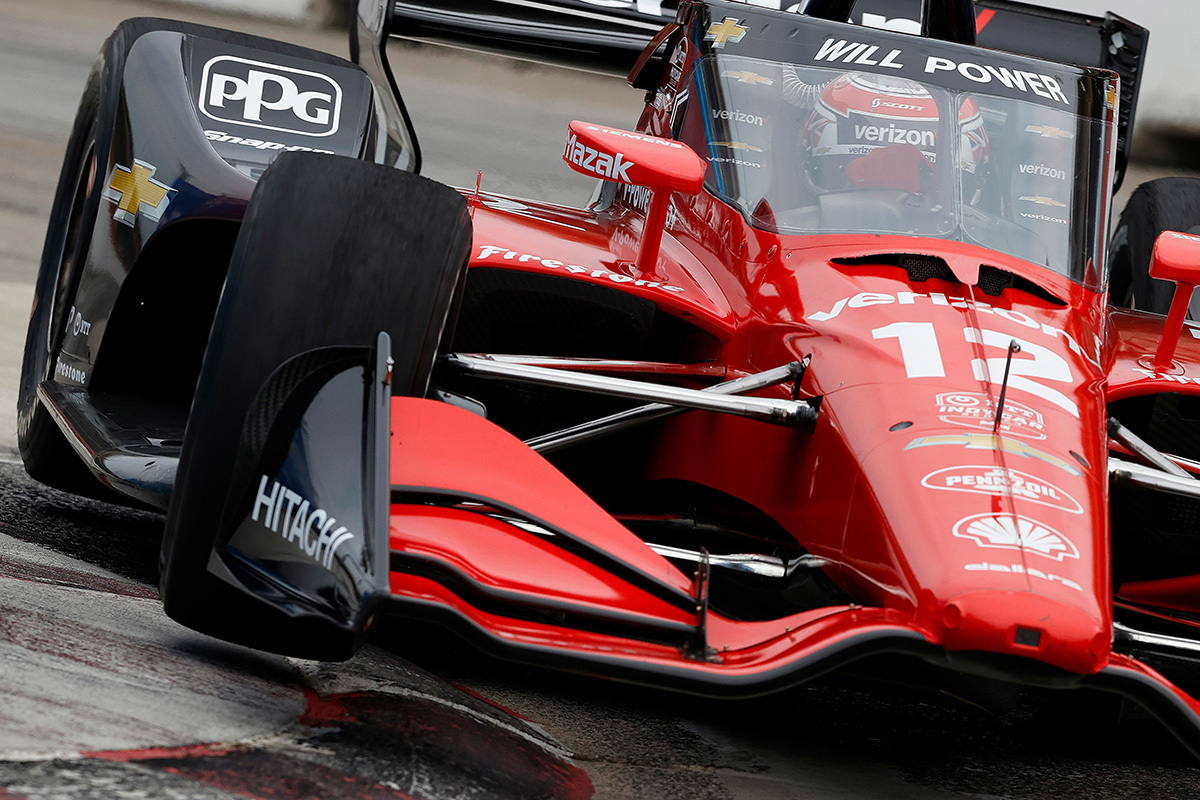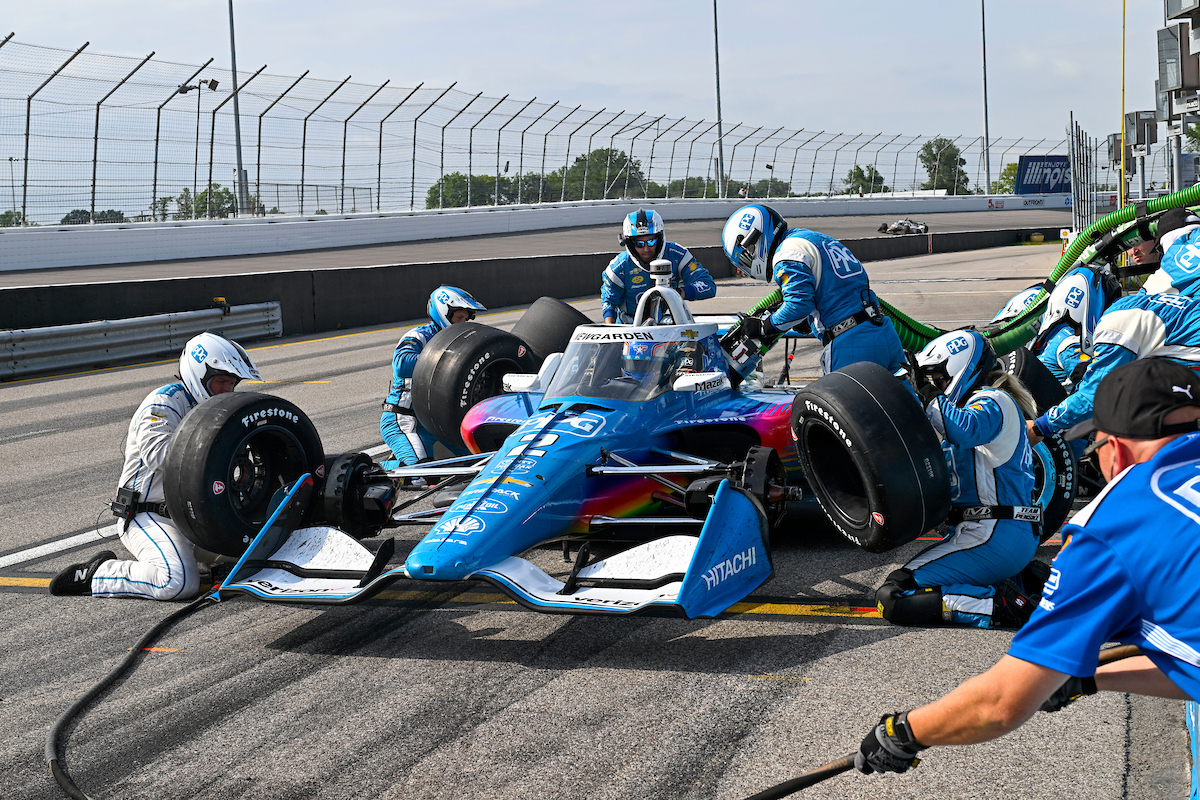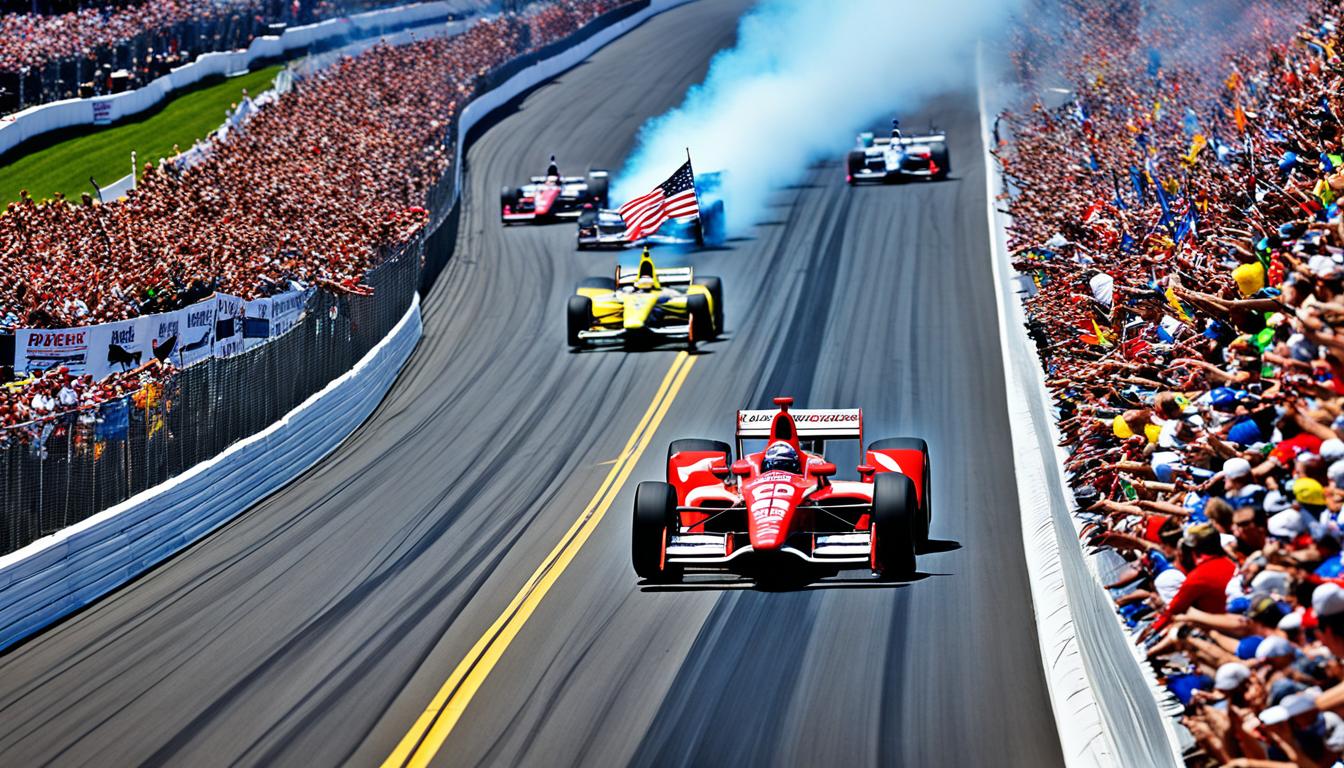IndyCar Top Speed Revealed – Get the Facts
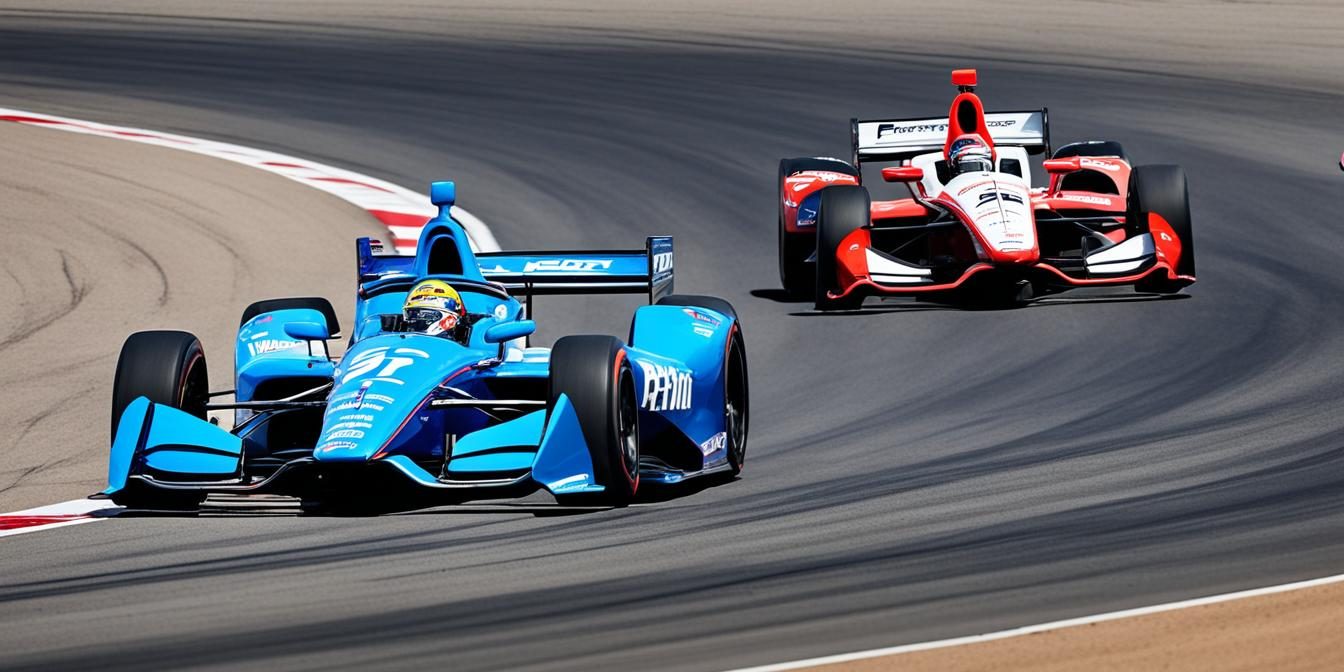
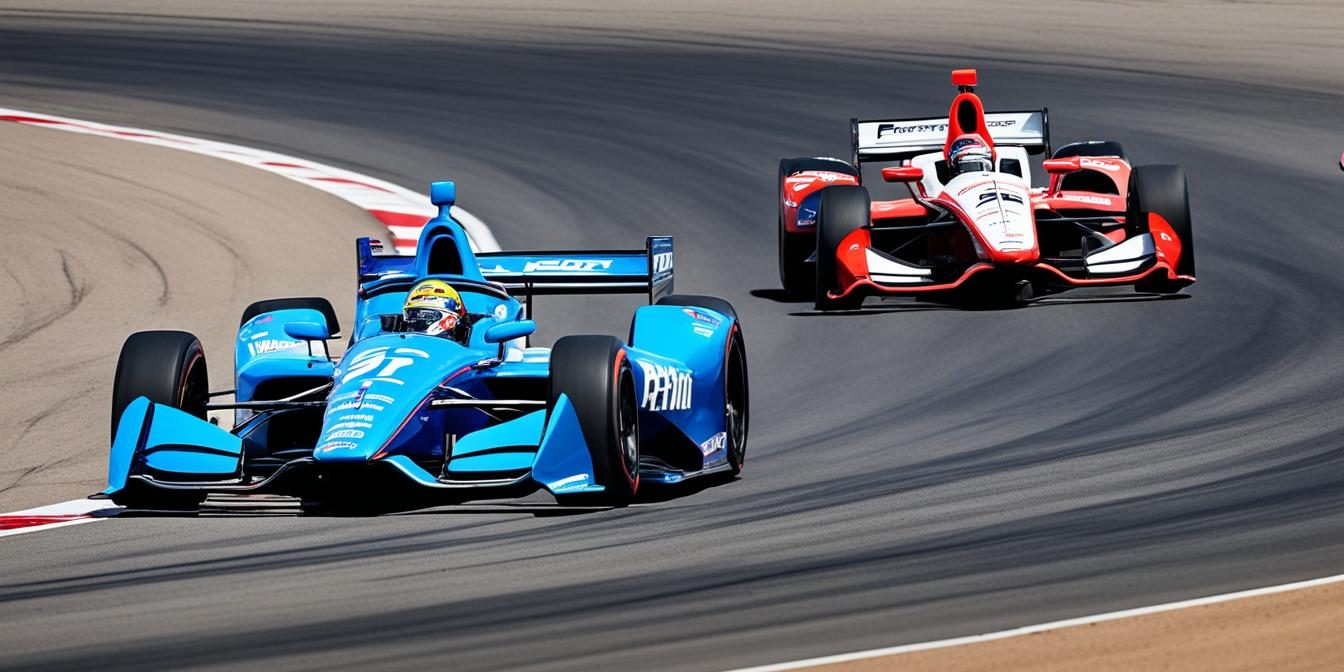
IndyCars are the ultimate speed machines that break speed records. But do you wonder how fast they can really go? Are their speeds so high that it’s hard to believe?
If you love motorsport or just like learning about speed, the top speed of an IndyCar will surprise you. Get ready to be amazed by the unbelievable speeds these cars can achieve. We’ll share the astounding numbers that make these cars race like the wind.
Table of Contents
The Differences Between F1 and IndyCar
Formula 1 (F1) and IndyCar are both big in the racing world. They offer exciting high-speed action but differ in many ways. These include their budgets, what they drive, and the tracks they race on. Let’s explore how F1 and IndyCar vary.
Budgets and Chassis
F1 and IndyCar differ a lot in their spending and car design. F1 teams have big budgets for research and development. They create their own cars using the latest technology and materials. On the other hand, IndyCar teams make do with smaller budgets. They all use the same type of car, made by Dallara. This means IndyCar races are often closer and more exciting.
Engines
The type of engines F1 and IndyCar use is also quite different. F1 cars have hybrid engines that mix a 1.6-liter V6 with extra power from hybrid tech. These engines can make up to 1000 horsepower. IndyCar engines are 2.2-liter V6 twin-turbos. They produce power between 550 and 700 horsepower. Both series carefully control engine rules to keep things fair and affordable.
Track Types
The kind of tracks each series races on shows another big difference. F1 mainly races on road courses with many turns and challenges. These tracks test a car’s handling and aerodynamics. IndyCar, on the other hand, races on roads, streets, and ovals. Oval tracks like the iconic Indianapolis 500 allow cars to reach very high speeds.
In conclusion, F1 and IndyCar have unique traits that make them popular in motorsports. F1 stands out with its big budgets and focus on technical advancements. IndyCar creates excitement with its shared car design and a mix of track types. Both series attract fans with their own brand of fast, thrilling racing.
Top Speed Comparison: F1 vs IndyCar
IndyCar is the champion of top speeds against Formula 1. These cars can zoom up to about 236mph (380km/h). In comparison, an F1 car’s average speed is lower, around 205mph (330km/h).
F1 cars could go faster, but they’re built for different things. They focus on making sharp turns and sticking to the track. This limits how fast they can go for a long time. On the flip side, IndyCars are made for speed on straight roads, letting them hit higher top speeds.
The different ways F1 and IndyCar are built show what each racing series values. F1 focuses on both speed and how well they can maneuver. IndyCar puts all its effort into going really fast in a straight line.
Comparing Top Speeds:
Here’s a table to compare F1 and IndyCar’s top speeds:
| F1 | IndyCar |
|---|---|
| Average Top Speed | 205mph (330km/h) |
| Maximum Top Speed | Varies, depending on track and conditions but can reach up to 236mph (380km/h) |
Looking at the table, F1 cars usually have a bit lower top speeds than IndyCars. But, F1 cars can reach higher speeds in some situations.
This comparison shows how F1 and IndyCar have very different goals in their racing. It makes motorsports more interesting with their unique approaches and strategies.
Engine Power: F1 vs IndyCar
Formula 1 (F1) and IndyCar use their own tech and power. F1 engines mix a 1.6 V6 with turbo and hybrid tech to reach about 1000 horsepower. This makes F1 cars super strong on the track.
IndyCar engines are 2.2 V6s with twin-turbos. They might be smaller than F1 engines but can reach 550 to 700 horsepower. This lets IndyCars go fast, creating amazing shows for fans.
F1 and IndyCar both limit how much their engines can be used. They do this to keep racing fair and the costs in line. This rule makes sure it’s the driver’s skill and the car’s performance that matter most.
Engine Power Comparison – F1 vs IndyCar
Here’s a way to see how F1 and IndyCar engines compare:
| F1 | IndyCar |
|---|---|
| Hybrid Power Unit | 2.2L V6 Twin-Turbos |
| 1.6L V6 + Turbocharging | Power Output: 550-700 HP* |
| Power Output: ~1000 HP* | Engine Usage Limits |
*Power can change based on the track and what settings they use.
F1 engines can go up to about 1000 horsepower, much higher than IndyCar’s 550 to 700. Even so, IndyCar stays competitive, focusing on a mix of power and other aspects to create exciting races.
F1 and IndyCar use tech, smart engineering, and rules to keep improving. This brings fans amazing races all over the world.
Qualifying Formats: F1 vs IndyCar
Formula 1 (F1) and IndyCar take different paths for qualifying. Let’s dive into how each series handles it.
F1 Qualifying Format
In F1, qualifying is a three-stage process. It sets up the race’s starting lineup. Here’s an overview:
- Q1 involves all drivers in an 18-minute window. They seek to be in the top 15 with their lap times.
- After Q1, the slowest five drivers start from 16th position and beyond.
- Q2 features the top 15 drivers, vying for top 10 positions in a 15-minute run.
- Following Q2, the bottom five are set between 11th and 15th on the grid.
- Q3 is a 12-minute showdown for pole position among the top 10.
This method creates intense competition at each stage, with elimination looming at every corner.
IndyCar Qualifying Format
IndyCar uses different methods for road courses and ovals.
For road and street races, drivers are divided into groups:
- All drivers first aim for the quickest times in a 10-minute slot.
- They’re then sorted by time into various groups.
- Each group races together, with only the best making it through.
- At the end, the top drivers go head-to-head for pole position.
Oval races present a unique challenge. Here, drivers qualify individually. Their times are averaged to determine grid positions.
This shift in qualifying methods showcases IndyCar’s diverse and tactical nature.
Race Formats: F1 vs IndyCar
F1 and IndyCar offer fans different kinds of excitement through their race formats. In F1, races follow either a set distance or time limit. On the other hand, IndyCar has various formats depending on the track type.
F1 events aim to cover about 190 miles or run for two hours. Yet, the Monaco Grand Prix stands out. It has a shorter distance because it takes place in a unique, narrow track.
IndyCar races provide a more varied experience. Its oval races, like the famous Indy 500, stretch over 500 miles with no fixed time. These tests are all about the driver’s stamina and the team’s strategy on the constant turns of oval tracks.
Road and street course races in IndyCar are different. They have a strict two-hour time limit. Drivers and teams must make quick choices to maximize their performance. This time limit makes races unpredictable and adds to the excitement.
Comparison of F1 and IndyCar Race Formats
| Race Series | Format | Duration | Distance |
|---|---|---|---|
| F1 | Cover a distance of 190 miles or two hours | Varies | Varies |
| Monaco Grand Prix (F1) | Shorter distance due to unique circuit characteristics | Varies | Varies |
| IndyCar | Oval races: No time limit, pre-determined distance | Varies | 500 miles (Indy 500) |
| IndyCar | Road and Street courses: Two-hour time limit | 2 hours | Varies |
Each series’ racing format offers unique challenges and strategies. Whether focusing on the driver’s endurance in the Indy 500 or the precise tactics in F1, both provide thrilling action. They keep fans eager and right at the edge of their seats.
Conclusion
IndyCar racing is super thrilling, hitting speeds up to 236mph. This is faster than Formula 1 cars. Unlike Formula 1, IndyCars are built for raw speed on the straightaways.
IndyCar and F1 differ in how they qualify and race, making each event exciting. Whether you love IndyCar or F1, the thrill is always high.
Watching IndyCar means seeing intense competition and big rivalries. F1, on the other hand, shines with its tech and fancy places. But IndyCar’s heart-pounding speeds and action make it stand out.
So, for those into watching fast cars or figuring out F1 versus IndyCar, both offer a special racing scene. No doubt, they provide unforgettable moments for fans.








